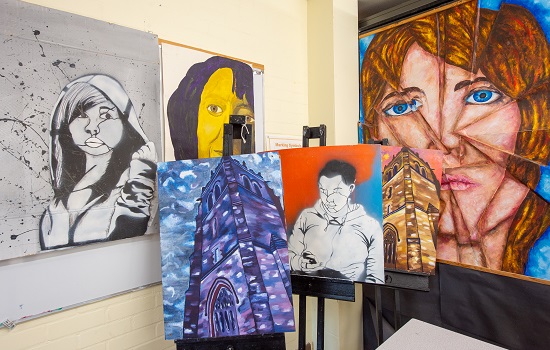Why should I study art?Pupils studying GCSE Art develop visual perception and understanding along with creative, imaginative and practical skills in a range of areas. They develop visual literacy and an appreciation of the richness of our cultural heritage through practical and critical responses to achievements in art, craft and design. The creative industries are one of the fastest growing industries in the world, but whether they decide to work in this sector or not, pupils studying art will develop crucial skills in collaboration, cooperation, decision-making, leadership, communication and problem solving while working with others. They will become more self-confident, self-disciplined, persistent and knowledgeable about how to review and improve their work to a high standard. Those studying art learn how to express their feelings, communicate their ideas, explore new things and use their imagination, as well as developing a cultural and historical understanding of the arts. Studying art helps a pupil to develop a positive work ethic, empowering them to celebrate their achievements and love of life-long learning. |
|
Do you have to do much writing in GCSE Art?
Yes. You would be expected to write evaluations about your own work as well as research and write about the work of other artists, craftspeople and designers. This is to support your practical work.
Do you have to be good at drawing to take GCSE Art?
Whilst drawing is a key element of the projects’ starting points, it is not the only technique used. Throughout the course, we help pupils to experiment and develop skills with a range of other media, materials and processes.
Can we make up our own themes or are there set topics to cover?
The theme/topic/starting points change from year to year but are always broad enough to enable pupils to experiment with a range of media, develop their own practical skills and research a variety of artists and art styles. Whilst the beginning of the course is teacher led, as pupils become more confident they can work more independently, developing their own ideas inspired by their own experiences, opinions and interests.
How will I be assessed?
The exam board for art is OCR and assessment is broken down into two components, as follows:
Component 1: Coursework
- This is the coursework element of the course, often called the portfolio. The work develops over the two year course and is usually displayed in a sketchbook.
- Worth 60% of final mark
Component 2: Examination
- Pupils have ten hours to complete a final piece of work and can use any media of their choice. They will have a choice of starting points from which they choose one, then have several weeks to experiment with media, develop ideas and make sure they are thoroughly prepared for the exam.
- Exam duration: Ten hours
- Worth 40% of final mark
What are the next steps?
For further information about GCSE Art, please email




